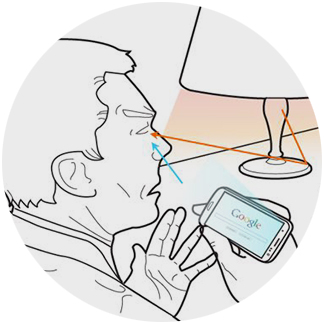 Kyungah Choi published a part of her Master thesis work in the journal of Optical Engineering. This study investigated the user-preferred color temperature adjustment for smartphone displays. The adjustment varies dependently on the illuminant’s chromaticity and intensity, and the optimal white was judged through a psychophical study. The title of the article is “User-preferred color temperature adjustment for smartphone display under varying illuminants”.
Kyungah Choi published a part of her Master thesis work in the journal of Optical Engineering. This study investigated the user-preferred color temperature adjustment for smartphone displays. The adjustment varies dependently on the illuminant’s chromaticity and intensity, and the optimal white was judged through a psychophical study. The title of the article is “User-preferred color temperature adjustment for smartphone display under varying illuminants”.
Abstract
The study aims to investigate the user-preferred color temperature adjustment for smartphone displays by observing the effect of the illuminant’s chromaticity and intensity on the optimal white points preferred by users. For visual examination, subjects evaluated 14 display stimuli presented on the Samsung Galaxy S3 under
19 ambient illuminants. The display stimuli were composed of 14 nuanced whites varying in color temperature from 2900 to 18,900 K. The illuminant conditions varied with combinations of color temperature (2600 to 20,100 K) and illuminance level (30 to 3100 lx) that simulated daily lighting experiences. The subjects
were asked to assess the optimal level of the display color temperatures based on their mental representation of the ideal white point. The study observed a positive correlation between the illuminant color temperatures and the optimal display color temperatures (r square = 0.89, p < 0.05). However, the range of the color temperature of the smartphone display was much narrower than that of the illuminants. Based on the assessments by 100 subjects, a regression formula was derived to predict the adjustment of user-preferred color temperature under changing illuminant chromaticity. The formula is as follows: [Display Tcp = 6534.75 log (Illuminant Tcp) − 16304.68 (R square = 0.87, p < 0.05)]. Moreover, supporting previous studies on color reproduction, the effect of illuminant chromaticity was relatively weaker under lower illuminance. The results of this experiment could be used as a theoretical basis for designers and manufacturers to adjust user-preferred color temperature for smartphone displays under various illuminant conditions.